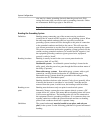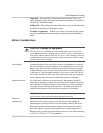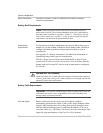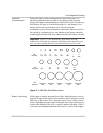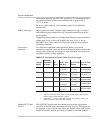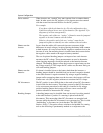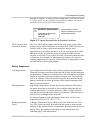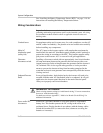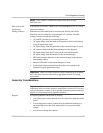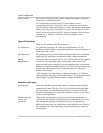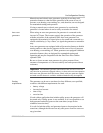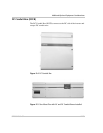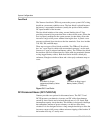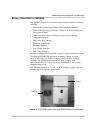
System Configuration
2–18 976-0043-01-02
See “Installing the Battery Temperature Sensor (BTS)” on page 3–18 for
instructions on installing the Battery Temperature Sensor.
Wiring Considerations
Conduit boxes For maximum safety and, in some cases, for code-compliance, run the AC
and DC cables in conduit(s). Pre-plan the wire and conduit runs carefully
before installing any components.
Main AC
distribution panel
(utility fed)
The AC1 input to the inverter requires a 60-amp breaker maximum be
installed into the main AC distribution panel (double-poled if stacked) to
protect the wiring in accordance with NEC. This breaker supplies utility
grid power to the inverter. AC1 is not used in off-grid applications.
Generator
disconnect switch
Installing a disconnect switch with an appropriately sized circuit breaker
(60 amp maximum) between the generator and inverter provides over-
current protection for the wiring between the generator and the inverter’s
AC2 terminal. This is also a good safety practice as it also provides a
means to prevent the inverter wiring from becoming energized in the
event that an electric-start generator starts unexpectedly while the inverter
is being serviced.
Subpanel/Inverter
Panel
In on-grid applications, loads backed up by the inverter will need to be
rerouted from the main AC distribution panel to a subpanel. In off-grid
application, the inverter panel functions as the main electrical panel.
Always use properly rated circuit breakers.
Fuses and/or DC
disconnects
Install a DC disconnect breaker or fuse in the positive, ungrounded,
battery line. This breaker protects the DC wiring in the event of an
accidental short. Size the breaker in accordance with the battery cables.
Switch this breaker OFF (or remove the fuse) whenever servicing the
batteries or inverter(s).
Important:
Be sure to consult the local and national electrical codes to confirm
grounding and bonding requirements specific to the intended system. All wiring
and installation methods should conform to applicable electrical codes and
building codes.
WARNING: Fire Hazard
Check existing structure wiring for “multi-branch wiring”. For new construction,
do not use “multi-branch wiring”.
For both cases refer to Appendix F, “Multi-wire Branch Circuit Wiring” for
additional information.



